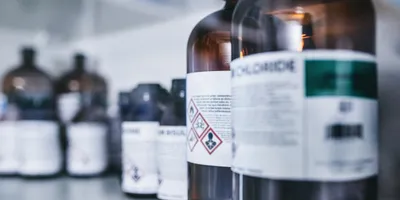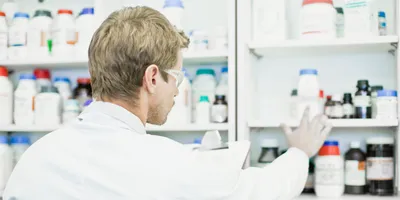KINGSTON, R.I. – September 6, 2012 – A team of engineers and students at the University of Rhode Island has developed an advanced blood-testing technology that incorporates a smartphone application, a hand-held biosensor and a credit card-sized cartridge to provide rapid, accurate biological analysis and wireless communication of test results.
This new lab-on-a-chip technology improves upon a previous system announced by the URI team in 2011 that generated enthusiasm among many sectors of the health care industry. Several patents are pending on the invention.
 |
| The smartphone application, hand-held biosensor and credit card-sized cartridge developed at URI. Michael Salerno Photography, University of Rhode Island |
“We went from a shoebox-size device last year to a hand-held device with several additional capabilities,” said Mohammad Faghri, URI professor of mechanical engineering and the lead researcher on the project. “The smartphone app turns the system on, monitors the assay, and sends the results securely back to your phone or to your doctor, all in about 20 minutes.”
Faghri said the advancements make the new system faster, more accurate, easier to use, and much less expensive than previous versions. For example, the fluorescence sensor in the hand-held unit costs less than $10 compared to the $3,200 sensor in the shoe-box system.
“It’s accuracy, compactness and low cost are a result of an innovative contact imaging system that serves as the fluorescence detector and the central piece of the fluid feedback control system,” Faghri said.
To operate the system, users place a drop of blood from a finger prick on a disposable plastic polymer cartridge and insert it into the hand-held biosensor. The blood travels through the cartridge in tiny channels 500 microns wide to a detection site where it reacts with preloaded reagents enabling the sensor to detect certain biomarkers of disease.
“Today when you go to the lab to have a blood test, they take vials of liquid from you and you have to wait sometimes days to get the results,” Faghri said. “With our system, you can have your blood tested when you walk into the doctor’s office and the results will be ready before you leave. Or you can do it at home and have the results sent to your doctor in real time.”
Faghri even envisions having astronauts at the International Space Station test their blood and sending the results wirelessly back to Earth.
The first cartridges the researchers developed focus on the detection of C-reactive proteins in the blood, a preferred method for helping doctors assess the risk of cardiovascular and peripheral vascular diseases. Additional cartridges can be engineered to detect biomarkers of other diseases, including the beta amyloid protein that can be used as a predictor of Alzheimer’s disease. The device can also be developed to detect virulent pathogens, like HIV, hepatitis B and H1N1 (swine) flu.
One of the most important advancements of the new device is that it can conduct the test on whole blood rather than blood plasma. The cartridge filters out the cellular components of blood, as well as some of the abundant non-target proteins that often interfere with the detection of the targeted protein.
The third generation of the device, currently in development, will put the entire lab on paper, eliminating the need for active pumping of blood and reagents through the cartridge.
In addition to Faghri, the research team is made up of URI Adjunct Professor Constantine Anagnostopoulos, graduate students John D. Jones, Michael Franzblau, Michael Godfrin, Alex Pytka, Nick DiFilippo, Hong Chen, Jeremy Cogswell and Manuel Muller.
Primary funding for the project was provided by the National Science Foundation through its Partnership for International Research and Education Program.










